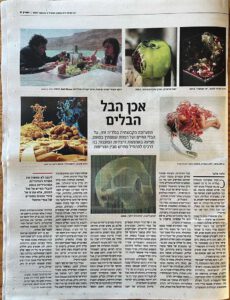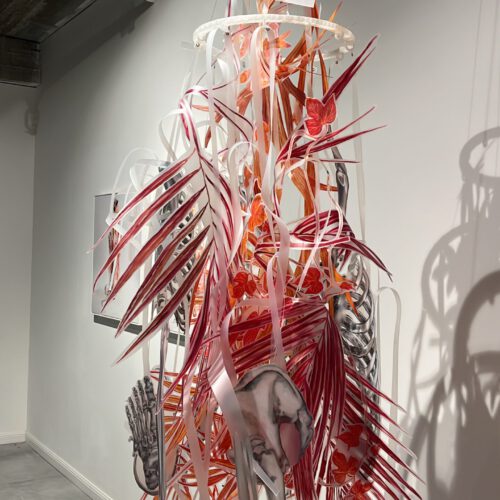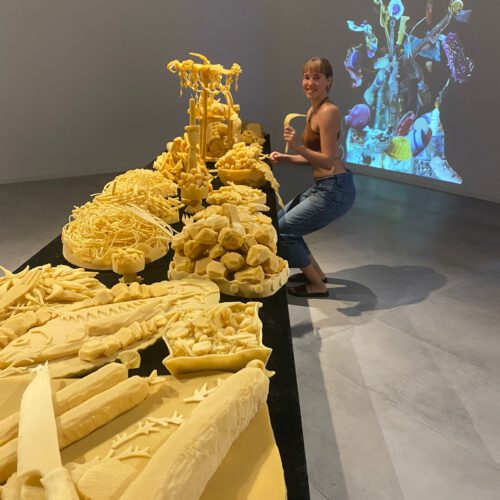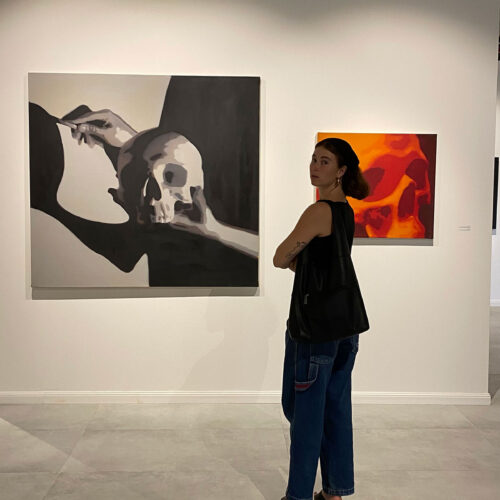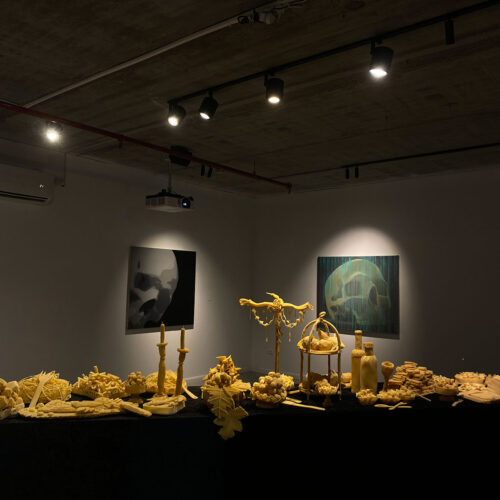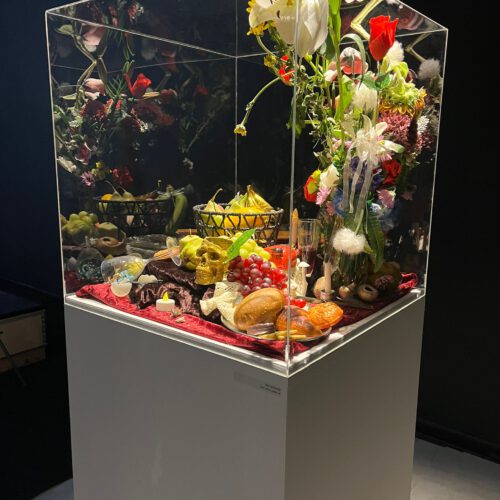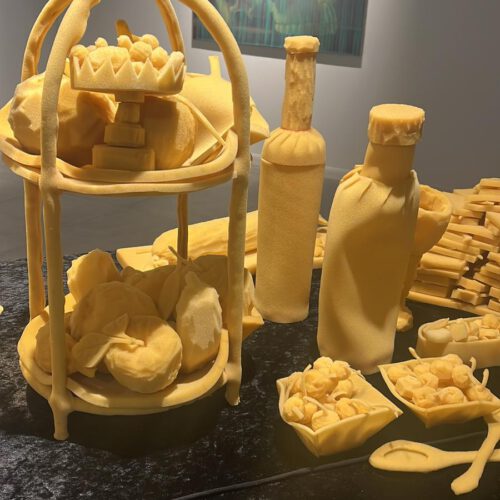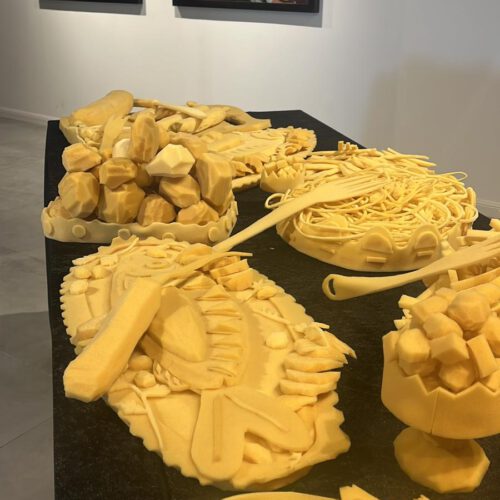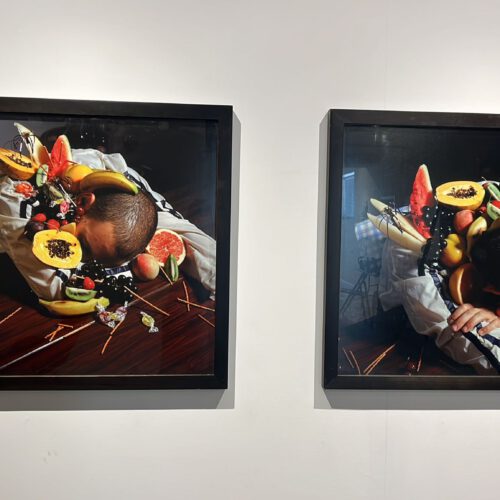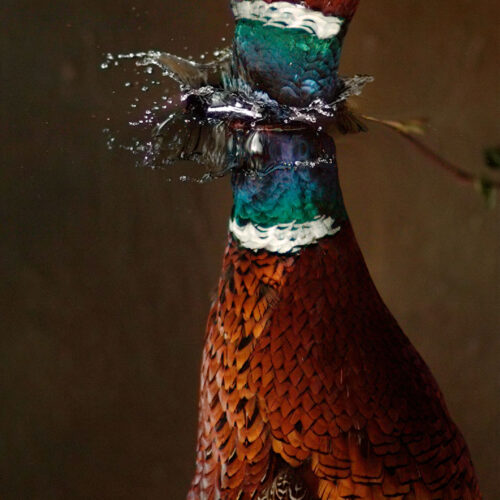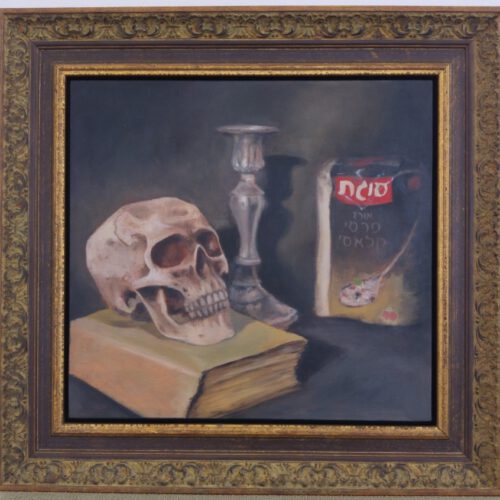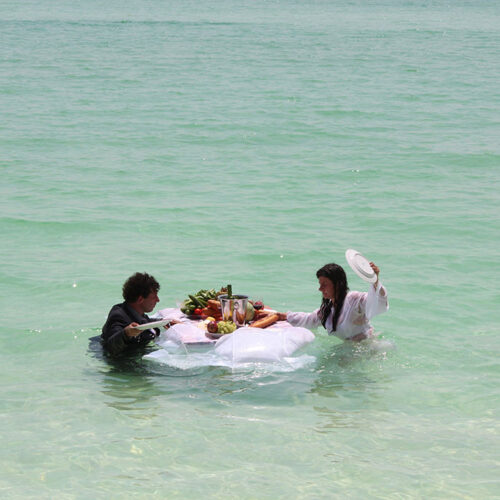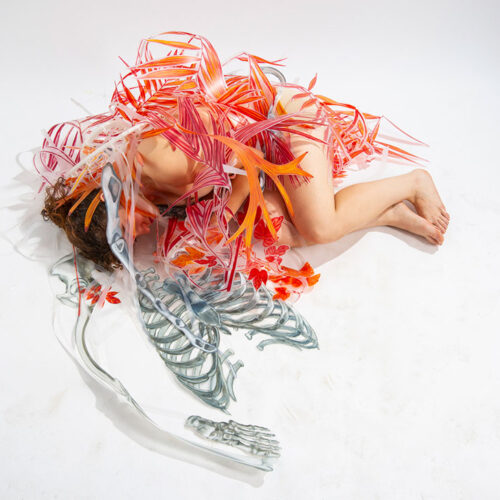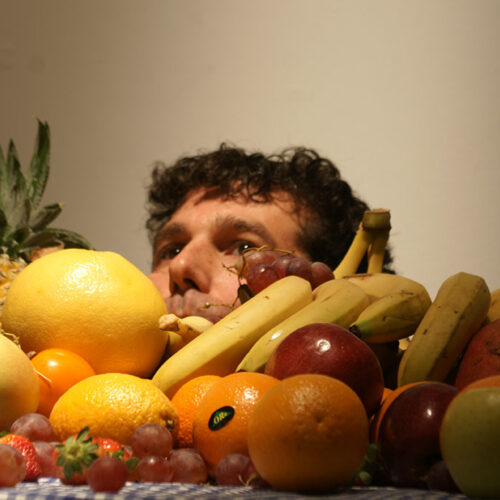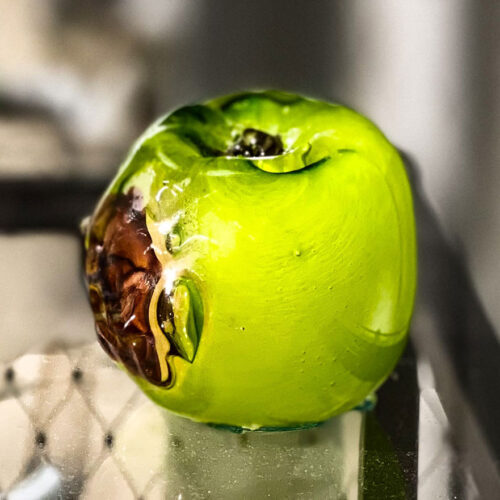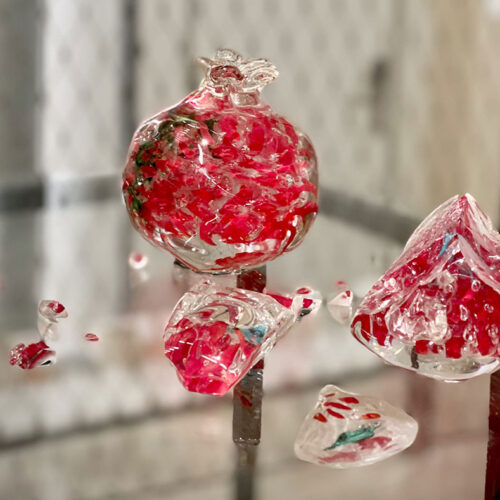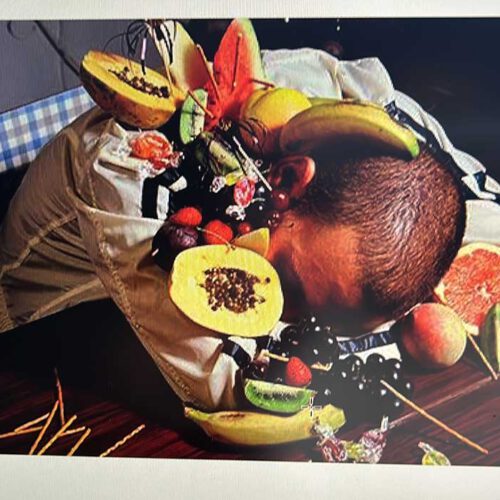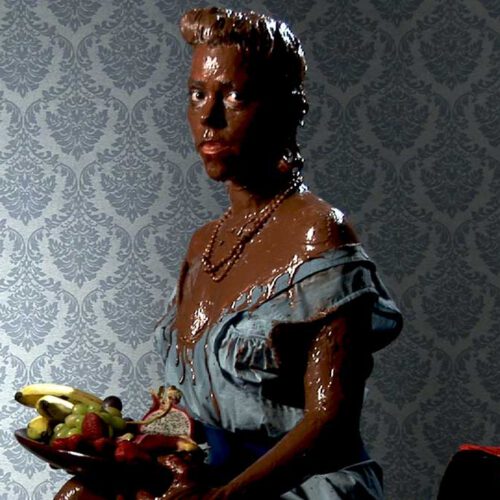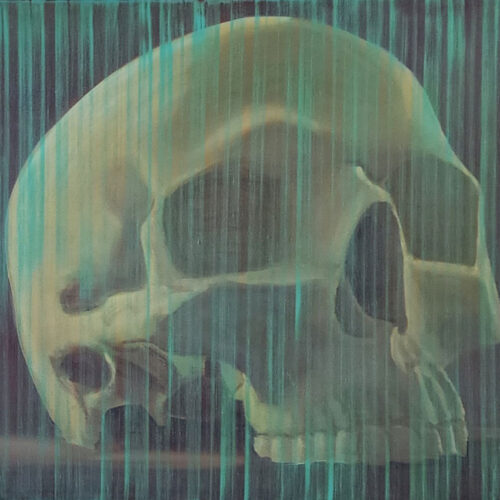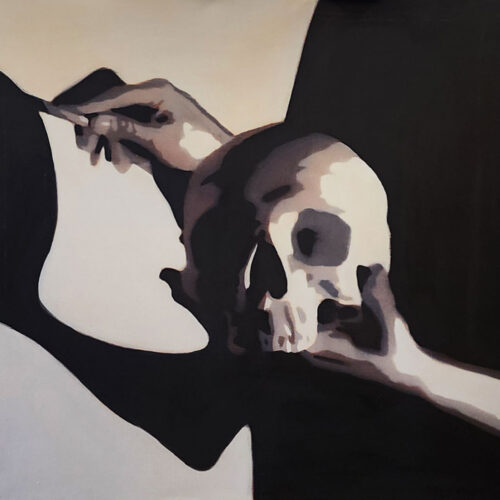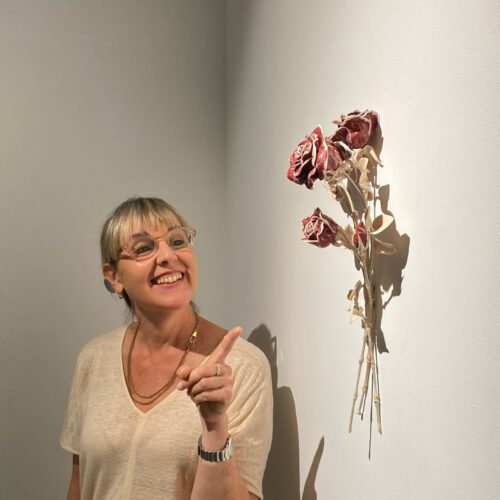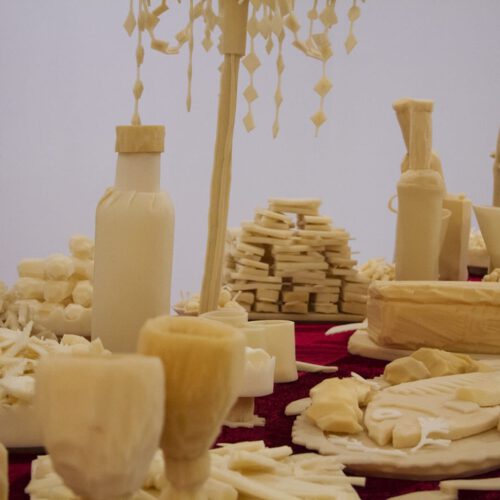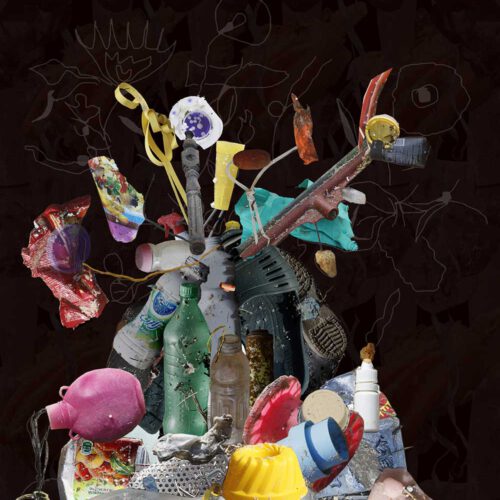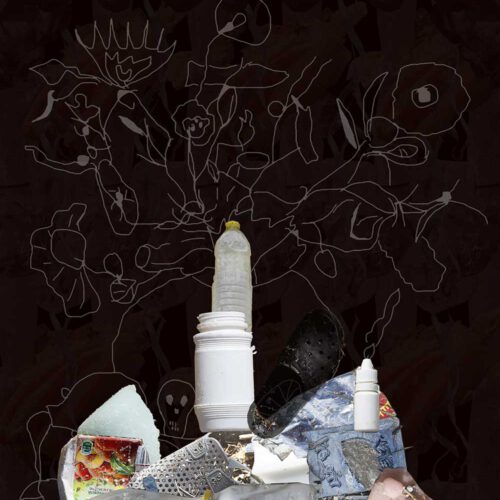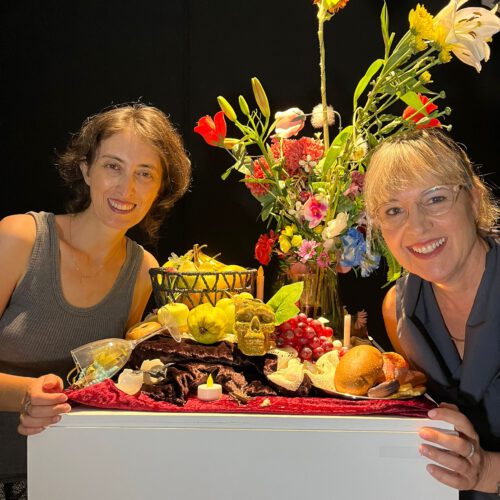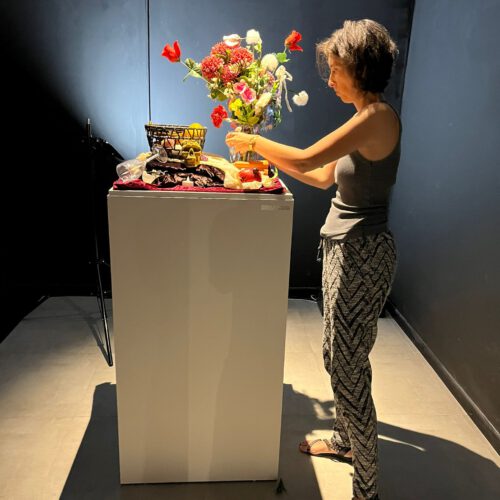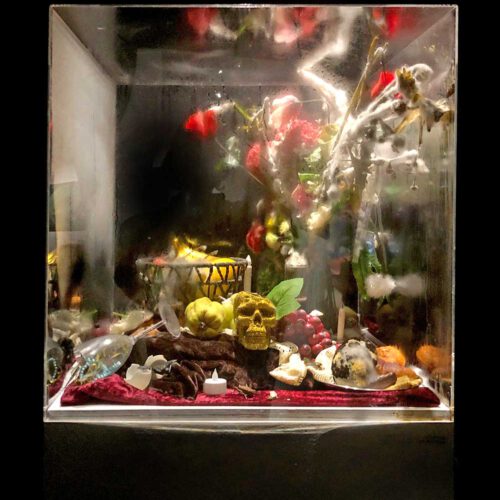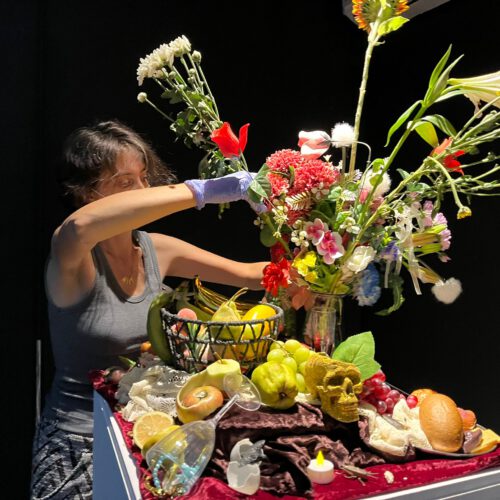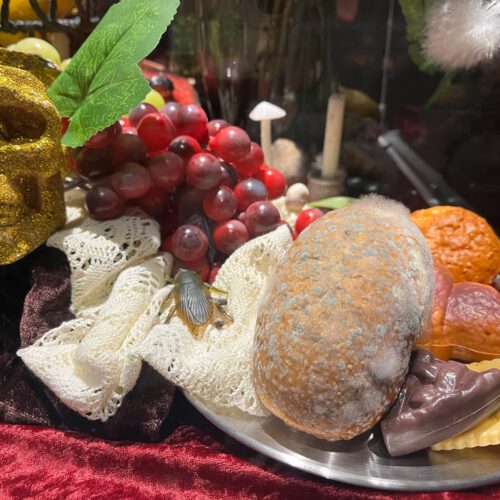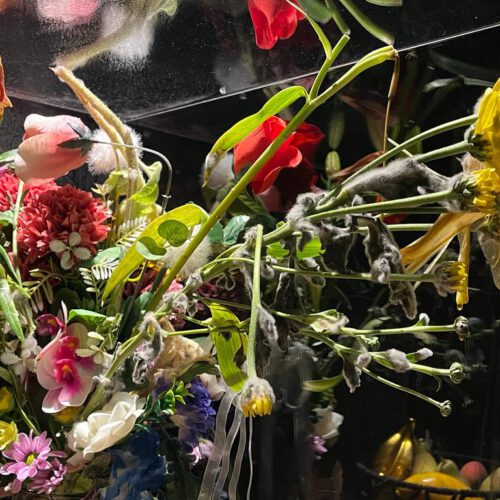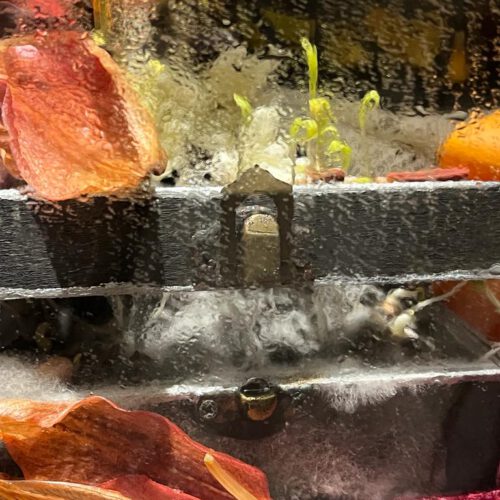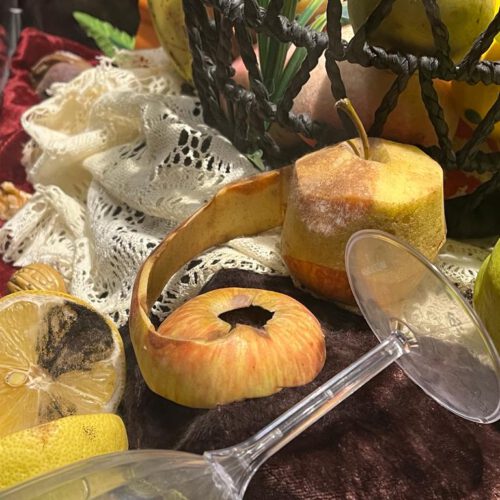Artists: Nezaket Ekici, Ronit Gurewitz, Ori Gersht, Ayelet Carmi, Yitzhak Livneh, Roni Landa, Yana Mitnick, Shahar Marcus, Einat Arif-Galanti, Vera Korman, Doron Rabina, Dina Shenhav
On Life and Death | Group Exhibition
ZUZU gallery, Emeq Hefer Industry | September-November 2023The term ‘still life’, an artistic genre of paintings depicting objects that are quotidian and domestic (belonging primarily to the home’s interior) is translated from the French – ‘nature morte’. In 17th century France and Holland, a sub-genre of painting developed in this context, the ‘vanitas’, which links a religious, philosophical meaning to household objects and emphasizes the ephemerality of life, that everything is passing, insignificant. The name ‘vanity’ – nothingness, futility, hubris – bears a moral value. These paintings warned their viewers – ‘memento mori’ – remember the day of your death! They served as a reminder of the uselessness and hopelessness of material achievements, instead accentuating the impermanence of corporeal beauty, the passing of time, and the inevitable morality that awaits all living things. They primarily presented plant motifs (bouquets of flowers at the pinnacle of blossoming and bowls overflowing with fully ripe fruits) alongside skulls, burning down candles, hunted animals, and hourglasses. They were founded on the important ethical question: Granted life’s finiteness, how should life be lived?
In the moral context, we might mention the German philosopher Friedrich Nietzsche who, through the concept he coined, ‘eternal recurrence’, warned against the danger of falling into nihilism. “We must live our lives,” he stated, “such that we would be willing to relive them over and over again, in an eternal recurrence.”
“What, if some day or night a demon were to steal after you into your loneliest and say to you: ‘This life as you now live it and have lived it, you will have to live it once more and innumerable times more: and there will be nothing new in it, but every pain and every joy and every thought and sigh and everything unutterably small or great in your life will have to return to you, all in the same succession and sequence… If this thought gained possession of you, it would change you as you are or perhaps crush you. The question in each and every thing, ‘Do you desire this once more and innumerable times more?’ would lie upon your actions as the greatest weight. Or how well disposed would you have to become to yourself and to life to crave nothing more reverently than this ultimate eternal confirmation and seal?” (Friedrich Nietzsche, Gay Science)[1]
In the appearances of ‘vanitas’ in Israeli art, it seems that beyond the reflexive glance within the field of art, there is also a layer of current events relating to the reality of a life full of wars and violence. One might imagine that the illusion of immortality would be impossible in the local reality, and that the question of the meaning of life would clarify itself. However, the sense of unease connected to the external dangers often leads to none other than a mental coping arrangement characterized by a fragile layer of denial and detachment expressed by escapism, hedonism, and downplaying. These denial mechanisms are marked by an attempt to avoid contact with the terror that stems from a lack of existential security, but they do not really succeed in silencing a current that festers below the surface and emerges from time to time. Thus, the works presented in this exhibition bring to the surface the deepest currents of the consciousness and the duality between vitality, sometimes even hysterical (in terms of “eat and drink because we might die tomorrow”), and the feeling of panic and fear of death.
This exhibition, which addresses appearances and expressions of ‘vanitas’ in contemporary Israeli art, exhibits a mix of works flavored with quite a bit of humor and a heaping portion of creativity.
[1] English from Gay Science, translated by Walter Kaufmann, Vintage (New York) 1974
Neta Gal-Azmon, Exhibition Curator
Opening: Friday, 22.09.23 at 10:00-14:00
Gallery Talks: 13.10.23, 27.10.23 at 12:00
Closing: Saturday, 02.12.23
הרשימה המשותפת // 21.9.23: על החיים ועל המוות בגלרייה זוזו // מגזין פורטפוליו
אמנות, כפרה עלייך: 21 תערוכות חדשות שצריך להספיק לפני הצום // מגזין TimeOut
“וְאָמוּת וְאוֹסִיף לָלֶכֶת” – שירים שמביטים אל מוות – הרצאה של אבי אלון בזום – 25.10.23
הרשימה המשותפת // 2.11.23: על החיים ועל המוות בגלרייה זוזו // מגזין פורטפוליו


